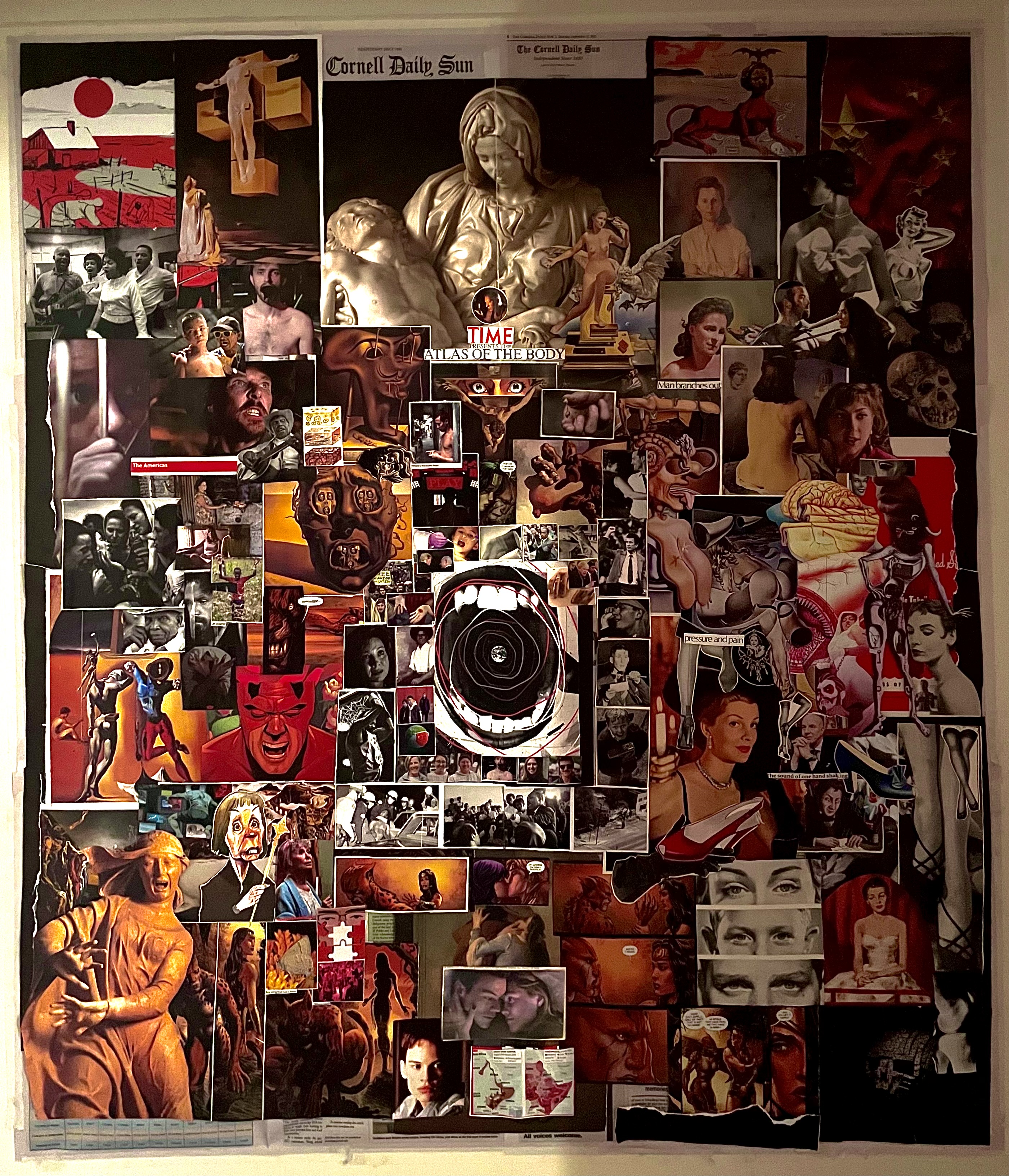Atlas of the Body
A cartographic exploration of how different cultures map, understand, and represent the human body - from sacred vessel to commodified object, revealing the violence and beauty in our conflicting anatomies.
Navigate the Body Maps
Explore how different cultural systems understand and represent embodied experience

Sacred Heart
The classical Pietà representing the sacred body in suffering and compassion
spiritual systemDigestive System of Images
Contemporary media fragments showing how bodies are consumed as images
digestive systemNeural Networks of History
Historical photographs and archival materials mapping collective memory
nervous systemCirculatory Violence
Images of systemic violence and harm flowing through the body politic
circulatory systemBreathing Desire
Representations of desire, sexuality, and the breath of life
respiratory systemStructural Framework
Newspaper headers and text providing the structural framework
skeletal systemCartographic Methods
How cultural cartography reveals the politics of embodiment
Anatomical Archaeology
Excavating how different cultures have mapped, understood, and represented the human body
Cartographic Process:
Layering medical illustrations, classical art, contemporary media, and indigenous knowledge systems to reveal conflicting body maps.
Source Materials:
Mapping Insight:
Each culture creates its own atlas of the body - what we think is objective anatomy is actually cultural interpretation.
Sacred/Profane Cartography
Mapping the tension between bodies as sacred vessels and commodified objects
Cartographic Process:
Juxtaposing religious iconography with advertising imagery to reveal how the same forms carry opposite meanings.
Source Materials:
Mapping Insight:
The body exists simultaneously as temple and marketplace - the collision creates both beauty and violence.
Geography of Trauma
Mapping how collective and personal traumas live in and shape physical bodies
Cartographic Process:
Using historical imagery and contemporary representations to show how trauma moves through generations and communities.
Source Materials:
Mapping Insight:
Bodies are landscapes where history lives - understanding this geography is necessary for healing.
Speculative Anatomy
Imagining how bodies might be understood in post-colonial, decolonized futures
Cartographic Process:
Integrating indigenous knowledge systems with speculative elements to envision liberated understandings of embodiment.
Source Materials:
Mapping Insight:
Decolonizing the body requires new maps - ones that honor wholeness rather than fragmentation.
Alternative Anatomies
Different cultural systems create entirely different maps of the same body
Sacred Body Map
Understanding the body as a temple and vessel for spirit
Key Regions:
- Sacred heart
- Crown chakra
- Life force centers
- Prayer hands
- Grounding feet
Medical Body Map
Western anatomical understanding focused on systems and pathology
Key Regions:
- Circulatory system
- Nervous system
- Digestive system
- Respiratory system
- Skeletal system
Political Body Map
How power, violence, and systems shape and control bodies
Key Regions:
- Sites of control
- Resistance zones
- Surveillance points
- Economic extraction
- Freedom spaces
Indigenous Body Map
Holistic understanding of body as part of larger web of relationships
Key Regions:
- Earth connection
- Ancestor wisdom
- Community bonds
- Natural cycles
- Healing pathways
On Bodies as Territories
Every atlas is a form of colonization - it decides which features matter, which boundaries exist, what gets named and what remains invisible. The body is perhaps the most colonized territory of all, mapped and remapped by medical science, religious doctrine, capitalist marketing, and state surveillance.
This collage emerged from studying anatomy textbooks alongside indigenous healing practices, classical art alongside contemporary advertising. I realized that what I thought was my body was actually a collection of competing maps - each telling me different stories about what this flesh means, what it's for, where its boundaries are.
The Pietà at the center represents perhaps the most powerful Western narrative about bodies: that they are made for suffering, that pain is sacred, that the maternal body exists to hold collective trauma. But what if we mapped differently? What if we started from indigenous understandings of the body as part of a larger web of relationships?
Decolonizing the body requires new cartographies - maps that honor the body's capacity for pleasure, healing, resistance, and connection. Maps that understand embodiment as relationship rather than object. This is the atlas we need for liberation: one that shows us how to come home to ourselves.
— On reclaiming embodied territory, 2022